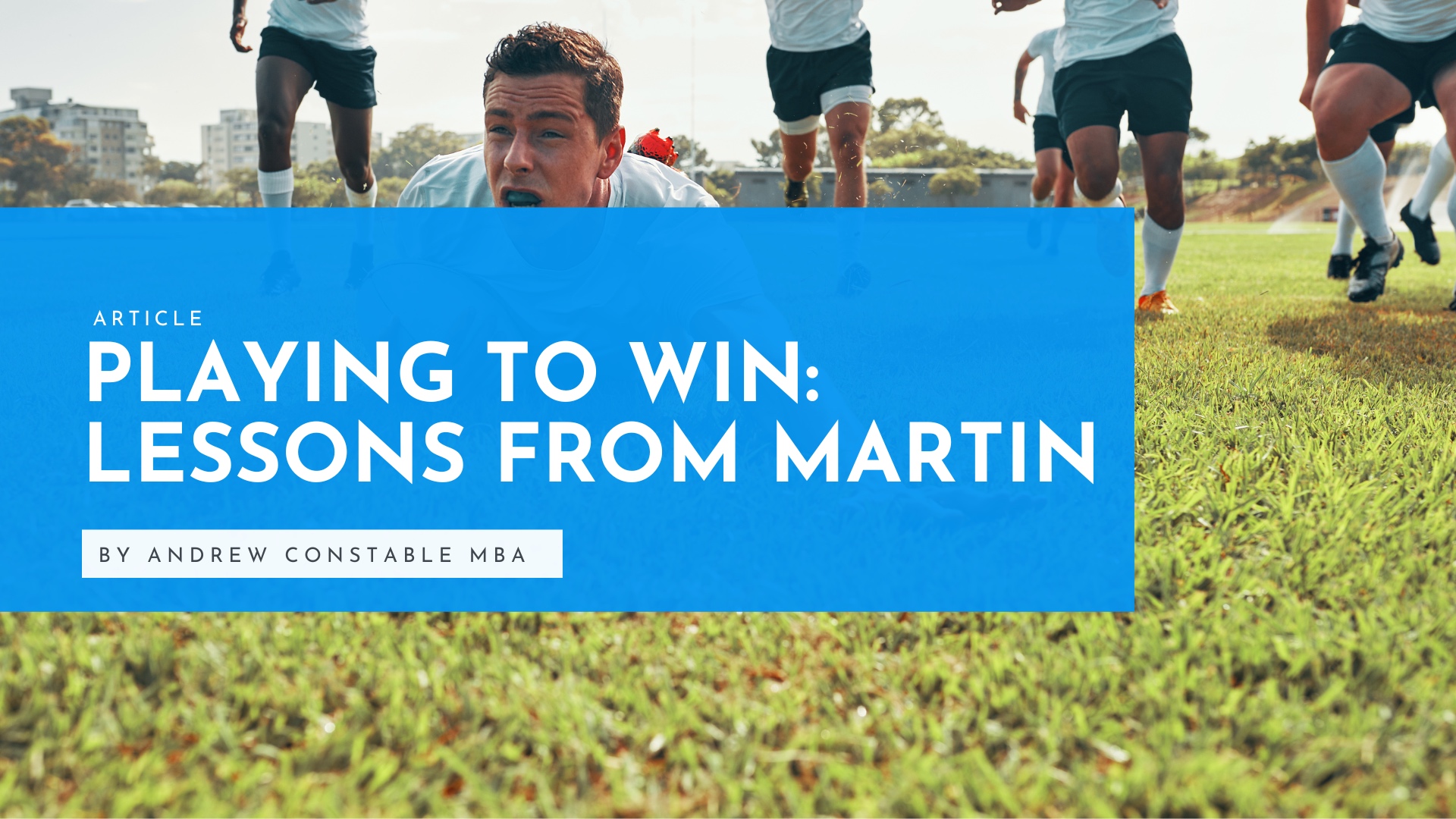Mar14

In the competitive business world, having a clear, actionable strategy is beneficial and essential for success. One of the most influential frameworks in strategic decision-making is "Playing to Win," developed by A.G. Lafley, former CEO of Procter & Gamble, and Roger L. Martin, a renowned strategy advisor and professor. This framework, detailed in their book "Playing to Win: How Strategy Really Works," provides a pragmatic and practical approach to business strategy. It's designed to help organizations of any size understand how to create a winning strategy.
At its heart, the Playing to Win strategy framework is built around five critical questions guiding strategic decision-making. These questions are designed to help businesses make clear, actionable choices that will enable them to win in their chosen markets.
The framework starts with the end in mind. It challenges businesses to define what it means to "win" in their context. This is not just about financial success but about understanding the broader impact the organization wants to have on its customers, employees, and other stakeholders. A winning aspiration goes beyond ordinary goals to inspire and provide a clear direction.
This question helps businesses narrow their focus. It's about choosing which markets or segments to compete in and making deliberate decisions about where not to play. This selection process is crucial because it determines where the organization will dedicate its resources to maximize impact and profitability.
Once the playing field is defined, the strategy must specify how the organization will achieve its winning aspiration in the chosen areas. This involves developing a unique value proposition that differentiates the business from its competitors and aligning the organization's resources and capabilities to deliver on this proposition.
Certain capabilities are essential to executing the chosen strategy. This part of the framework focuses on identifying and developing the skills, systems, and processes that enable an organization to deliver its unique value proposition effectively and efficiently.
Finally, the framework addresses the need for supportive management systems. These systems include performance measurement, resource allocation, and other processes that ensure the strategy is implemented as intended. They enable the organization to adapt to changes and stay on course towards achieving its winning aspiration.
Implementing the Playing to Win framework requires disciplined thinking and a commitment to strategic clarity. It's not a one-time effort but a continuous strategic review and adaptation process. Organizations must be willing to ask tough questions, make hard choices, and focus relentlessly on execution.
The beauty of the Playing to Win strategy lies in its simplicity and practicality. It demystifies the strategy concept and provides a clear roadmap for making strategic choices. By rigorously applying this framework, businesses can develop strategies that are not only ambitious but achievable, ensuring they play to win in their chosen fields.
The Playing to Win framework by A.G. Lafley and Roger L. Martin offers a powerful approach to strategic decision-making. It guides businesses through a series of structured questions that help clarify their aspirations, focus their efforts, and align their resources toward achieving a competitive advantage. In the dynamic and competitive business world, adopting a clear, actionable strategy framework like Playing to Win is essential for any organization aiming for the top.
Visualise Solutions helps medium-sized businesses innovate and make measurable progress towards their business outcomes so their companies thrive.
Elevate your business results with expert innovation and strategy, including advanced business model innovation, effective OKR, and balanced scorecard frameworks.
Learn more and contact us now.
By Andrew Constable MBA, XPP, BSMP
Keywords: Business Strategy, Innovation, Leadership
 The Board Chair as the Primary Lever of Psychological Safety
The Board Chair as the Primary Lever of Psychological Safety Friday’s Change Reflection Quote - Leadership of Change - Change Leaders Maintain Trust and Legitimacy
Friday’s Change Reflection Quote - Leadership of Change - Change Leaders Maintain Trust and Legitimacy The Corix Partners Friday Reading List - January 16, 2026
The Corix Partners Friday Reading List - January 16, 2026 Effective Government Is Built: A Five-Pillar Framework for Public Leaders
Effective Government Is Built: A Five-Pillar Framework for Public Leaders Tariffs, Data, and the Complexity of Compliance
Tariffs, Data, and the Complexity of Compliance